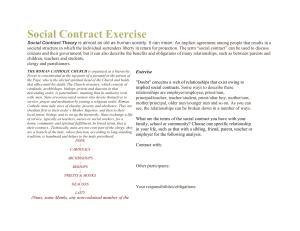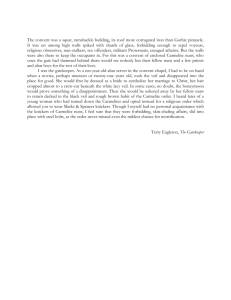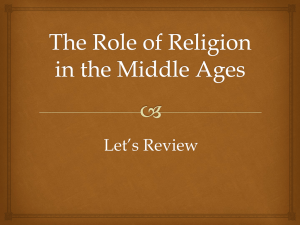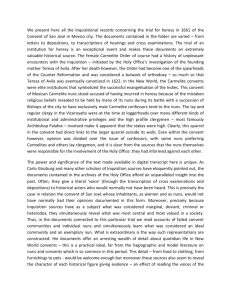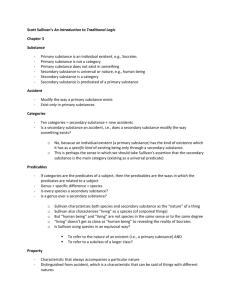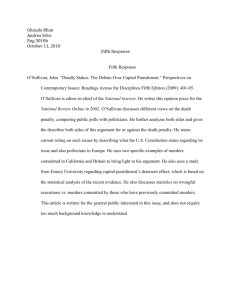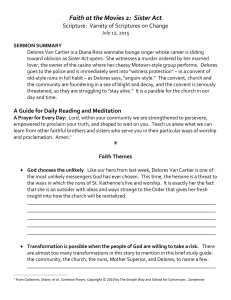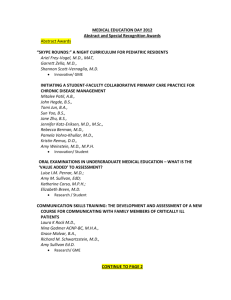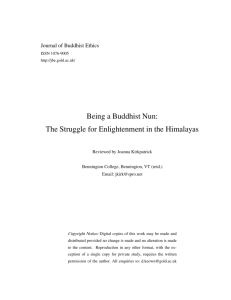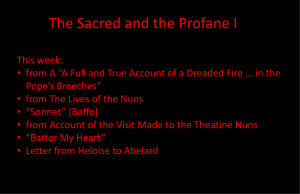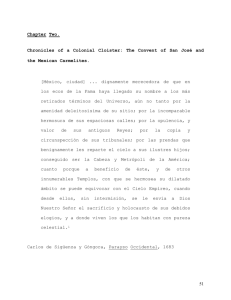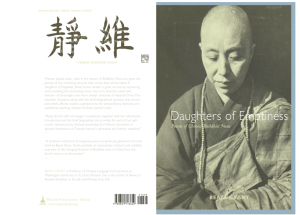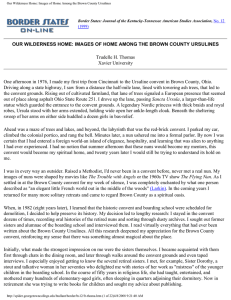Rebecca Sullivan, Visual Habits: Nuns, Feminism
advertisement
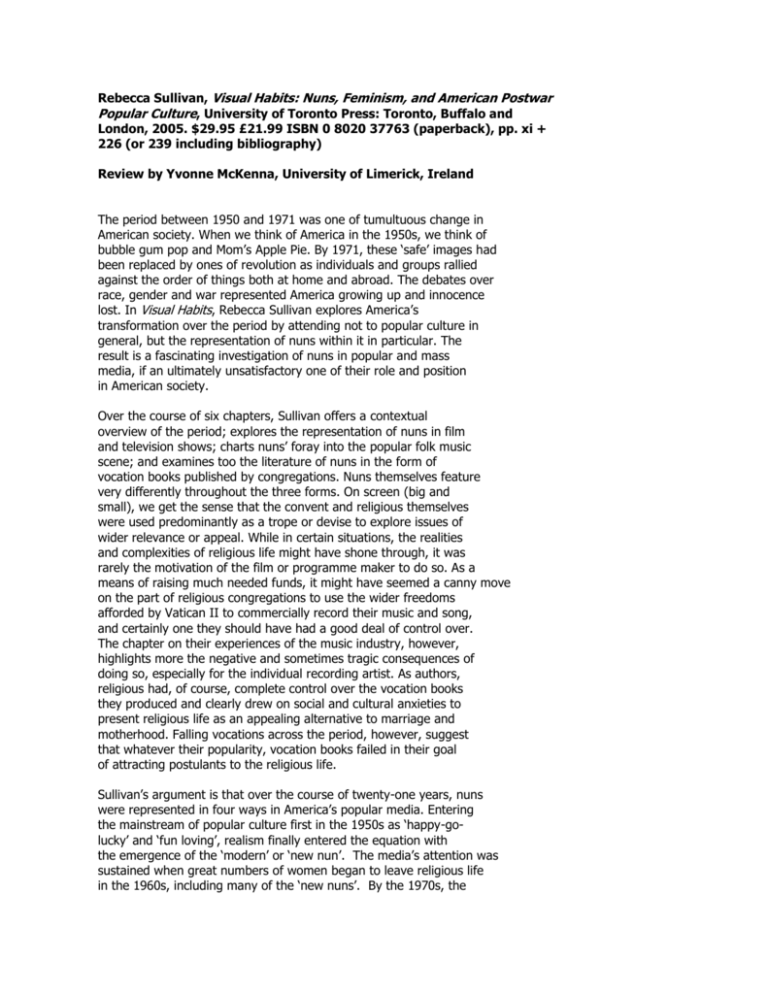
Rebecca Sullivan, Visual Habits: Nuns, Feminism, and American Postwar Popular Culture, University of Toronto Press: Toronto, Buffalo and London, 2005. $29.95 £21.99 ISBN 0 8020 37763 (paperback), pp. xi + 226 (or 239 including bibliography) Review by Yvonne McKenna, University of Limerick, Ireland The period between 1950 and 1971 was one of tumultuous change in American society. When we think of America in the 1950s, we think of bubble gum pop and Mom’s Apple Pie. By 1971, these ‘safe’ images had been replaced by ones of revolution as individuals and groups rallied against the order of things both at home and abroad. The debates over race, gender and war represented America growing up and innocence lost. In Visual Habits, Rebecca Sullivan explores America’s transformation over the period by attending not to popular culture in general, but the representation of nuns within it in particular. The result is a fascinating investigation of nuns in popular and mass media, if an ultimately unsatisfactory one of their role and position in American society. Over the course of six chapters, Sullivan offers a contextual overview of the period; explores the representation of nuns in film and television shows; charts nuns’ foray into the popular folk music scene; and examines too the literature of nuns in the form of vocation books published by congregations. Nuns themselves feature very differently throughout the three forms. On screen (big and small), we get the sense that the convent and religious themselves were used predominantly as a trope or devise to explore issues of wider relevance or appeal. While in certain situations, the realities and complexities of religious life might have shone through, it was rarely the motivation of the film or programme maker to do so. As a means of raising much needed funds, it might have seemed a canny move on the part of religious congregations to use the wider freedoms afforded by Vatican II to commercially record their music and song, and certainly one they should have had a good deal of control over. The chapter on their experiences of the music industry, however, highlights more the negative and sometimes tragic consequences of doing so, especially for the individual recording artist. As authors, religious had, of course, complete control over the vocation books they produced and clearly drew on social and cultural anxieties to present religious life as an appealing alternative to marriage and motherhood. Falling vocations across the period, however, suggest that whatever their popularity, vocation books failed in their goal of attracting postulants to the religious life. Sullivan’s argument is that over the course of twenty-one years, nuns were represented in four ways in America’s popular media. Entering the mainstream of popular culture first in the 1950s as ‘happy-golucky’ and ‘fun loving’, realism finally entered the equation with the emergence of the ‘modern’ or ‘new nun’. The media’s attention was sustained when great numbers of women began to leave religious life in the 1960s, including many of the ‘new nuns’. By the 1970s, the media seemed either unable or uninterested in portraying the complexities of religious life and reverted instead to stereotype or fantasy. Fleshing out her argument, Sullivan proves to be a perceptive reviewer of film and television and combines this with a critical analysis of the relationship between vocation literature and postwar girl culture. The reader is taken on a journey throughout familiar and unfamiliar territory in a manner which engages as much as it does surprise (growing up in Ireland, slightly later than the period under review, I had mistakenly presumed that The Flying Nun involved no more a stretch of the imagination than that religious could fly planes!). The success of Sullivan’s exploration is definitely in highlighting a forgotten fact: that in America, religious, during a very specific period, ‘enjoyed’ a particular position within popular culture not entirely commensurate with their number, one they had not experienced previously and have not since. She manages very effectively to illustrate the dis-juncture between the myth of religious life as presented in the popular media and the reality of the lives of religious – more so through attention to the myth than the reality. She poses interesting questions regarding why women religious received no attention in popular media, then received attention, then were ignored again, and suggests some uncomfortable answers that scholars in general and feminist scholars in particular should consider. And she portrays the entertainment industry as exactly that – an industry dominated by market forces. The difficulty, and it is one common to explorations of popular culture, is the connection she attempts to make between the reality of the lives of religious and the representation of them within popular culture. It is simply not the case, as Sullivan suggests in her second chapter, that changes within convent life are best examined through film. What about the individuals who lived through change within convents? Surely their experiences are more relevant to that question? But this is not to take away from the value of the representation of religious in popular culture and the value, in and of itself, of exploring their representation. This is not a book about religious, although they feature a good deal within it. Rather, it is a book about popular culture. By overstretching the context in which we are asked to read the representations, Sullivan undermines her own research and its findings. I think in this respect, and in this respect only, she does herself a disservice.
